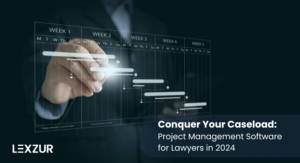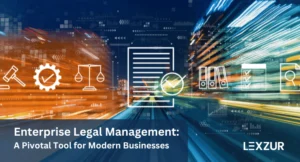Legal practice management technology is frequently growing among big professionals in the legal industry and the influencers and players. We can agree that there are many advancements in it and that it is bringing the sector to adapt to modern changes. However, this blog will tackle the best ways to check your investment return and how to measure the ROI of adopting legal technology. The blog sheds light on the main benefits these legal technology solutions can bring to your practice in the short and long term.
Numerous problems face legal departments all over the world. These problems affect the overall performance of legal professionals as well as the financial situation in their workplace. However, legal experts who embrace technology can successfully tackle these challenges and make all the difference in the world. As a result, they position themselves at a better place in the market compared to their counterparts.
Main Categories for Assessing the ROI
There are four primary categories in which to assess ROI on legal tech investments.
-
Profitability
can we reduce costs, or can we drive new revenues in specific areas of the firm;
-
Capacity
can we improve the volume of the work that we can take on and support;
-
Client Satisfaction
can we raise the level of our client service or otherwise improve our clients’ experiences with our firm; and
-
Internal Satisfaction
can we make the practice of law easier or more enjoyable for our attorneys and professional staff?

How can we measure the ROI of adopting legal management technology?
Qualitative ROI gives a complete understanding of the benefits we can get from technology; These benefits can include:
- Improving legal work operations;
- Boosting employee spirit;
- Enhancing employee retention;
- Making your attorneys or Legal IT team more effective;
- Enhancing your client experience;
- Making your legal team or law firm more competitive in the marketplace;
- It saves time and money.
When it comes to measuring value and quality service offered by law firms and in-house legal teams in the corporate sector, 70% of the clients who work with legal professionals who embrace technology say that they are satisfied with their services. Gartner.
Metrics to Measure the ROI of your Investment in Legal Technology
Legal professionals are trying more compelling and disruptive ways to approaching digital solutions. An aggregate of all of the following metrics can help measure the ROI of your investment:
Although there are many approaches to calculate the ROI, it’s important to consider what’s relevant for the particular technology you intend to acquire.
There are several ways to measure ROI, but not all of them may be appropriate or even valid for each technology acquisition. Once you’ve determined the goal of the proposed technology solution, you will need to consider the following factors that might impact ROI.
Convenience
Consider how your legal department currently operates and what tasks your team is responsible for. What routine tasks do you carry out currently? What tasks can legal technology automate? How easy is it for users to get accustomed to the new solution? When you decide to invest in legal technology, it’s important to consider how easy the solution is to implement. While more complex solutions may offer several benefits to the legal department, if it’s considered too “disruptive” to your current processes, you’ll have a hard time gaining user adoption.
Speed
How long does it take you to get things done now, and how long will it take to complete the same task with the proposed technology solution? What tasks will you be able to complete faster?
Efficiency
In recent years, corporate legal departments have been grappling with the “more with less” challenge. They have to manage an increasing workload, caused partly by complex regulations, which has meant they struggle to keep up with the growth of the rest of the business. In other words, the “more with less” challenge means legal departments are handling an increasing workload with the same, or fewer, resources. How will legal technology help you manage a heavy workload and get things done?
Costs
Legal Practice Management technology offers real-time visibility and consistency of how legal invoices and bills, legal matter information and budgets are input, processed and centrally stored. This creates greater control.
The use of technological solutions enables internal processes to run more smoothly and eliminates many of the repetitive tasks previously undertaken by secretaries and administrative staff. But it has several other advantages, such as allowing firms to pass on the savings technology facilitates to their clients, in the form of lower fees, and providing greater flexibility for both lawyers and clients.
Book a Free Legal Tech Consultation with our legal tech experts
Discuss your expectations and goals with Lexzur tech experts by reaching out and scheduling a Free Legal Tech Consultation.













Leave a Comment